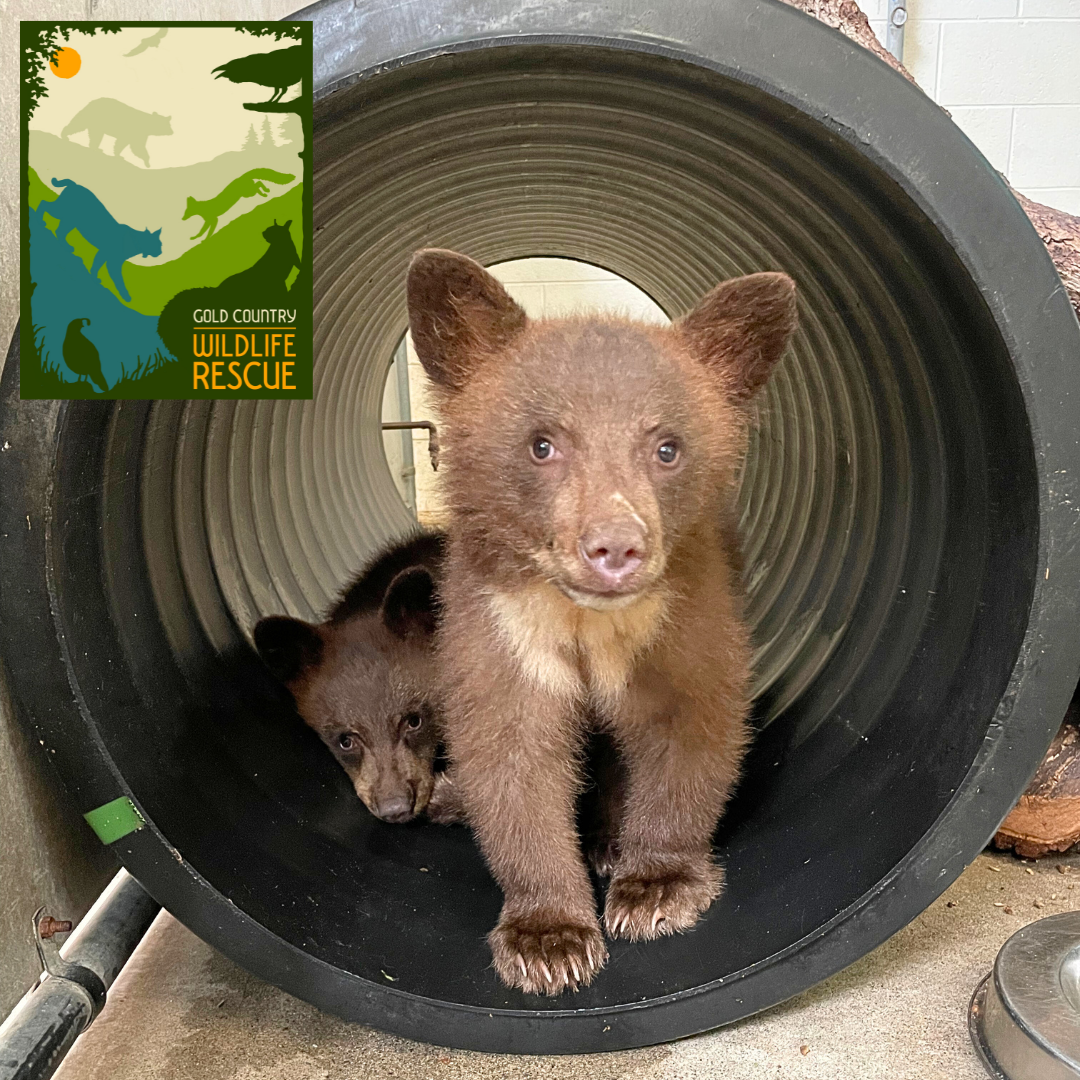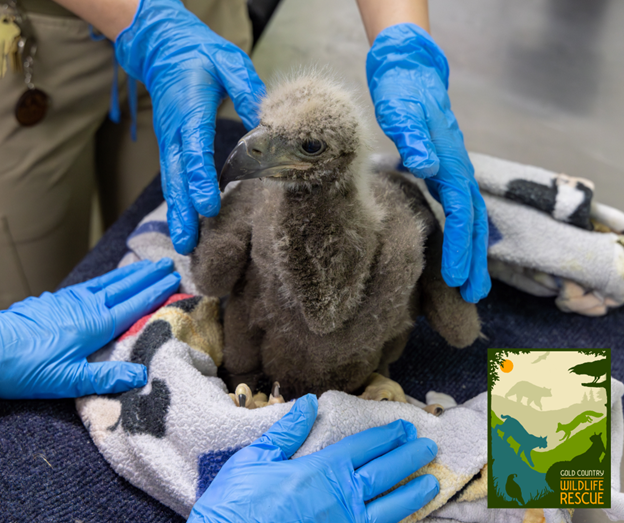Orphaned brother and sister Black Bear cubs were brought to us by the California Department of Fish and Wildlife after they were found wandering in Nevada County, CA. The two little black bear cubs lost their mom and had been seen alone for several days. Rescuers caught the hungry siblings using marshmallows and honey, so they’ve been aptly dubbed Honey (ID#23-2188) & Marshall (ID#23-2211).
Black Bears mate in June/July and give birth in early February. Cubs can weigh less than a pound when born but will reach 5-7 pounds within 1-2 months as they emerge from the den with their mom. Honey and Marshall only stood a few feet high when they arrived and weighed around 19 lbs each. Being separated from their mom, they will require daily human care until they are old enough to be returned to the wild next spring.
Veterinarians Jamie Peyton, DVM, and Eric Johnson, DVM, from the Wildlife Disaster Network, provided a full examination of the cubs upon their arrival. Each cub is sedated during their exam while vets take blood and fur samples, treat them for parasites, then examine them from teeth to tail. Each cub received a “clean bill of health”…but no bill.
Keeping Them Wild
Black bear moms teach their cubs everything she does, including how and where to find food, what food sources are safe, what is dangerous, and what is to be avoided. As their human “foster parents,” we must raise them but be careful not to allow them to imprint on their caregivers. Wildlife rehabilitation is ONLY successful when injured or orphaned wildlife are able to return home.
Every animal that comes into our care is treated as wild, and we work hard to KEEP THEM WILD throughout rescue, rehabilitation, and release. The wilder animals are when they leave our care, the better chances they have of surviving on their own in the wild.
What steps do we take to KEEP THEM WILD?
- We limit direct exposure to wild animals, including handling them, feeding them, and speaking around them.
- We visually block out enclosures to restrict the number of humans the animals can see and wear animal masks when feeding wildlife that are at high risk of imprinting.
- We provide enrichment activities for wildlife to simulate climbing, foraging, and surviving in the wild.
- When possible, we group animals by species and age to help them develop skills and experiences from their own species.
- Finally, we release wildlife at locations where they were found or in areas isolated from humans with the right natural resources to help them flourish.
Caring for bear cubs is no easy task, and we can use all the help we can get. Donate today to help us provide rehabilitative care to Honey and Marshall…and ALSO to the hundreds of California’s injured and orphaned wildlife currently recovering at our center!
Source: https://wildlife.ca.gov/conservation/mammals/black-bear









